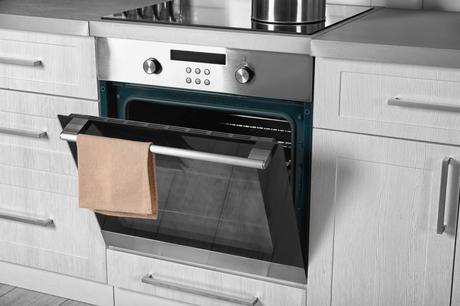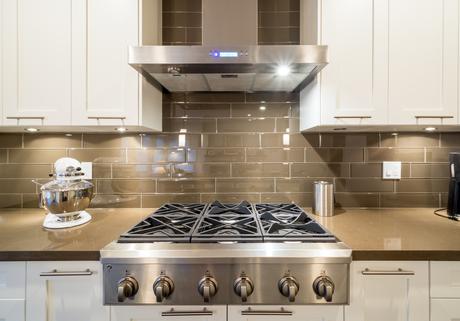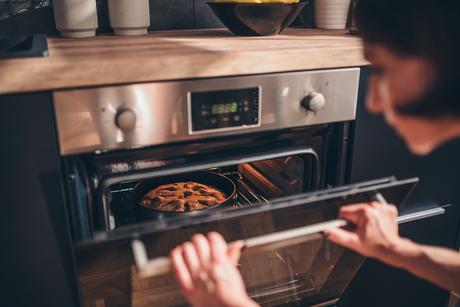The cooking appliance is, arguably, the crown jewel of your kitchen. It's where the magic (and the sausage) is made, especially in the homes of chefs in residence. But, as you peruse options for kitchen appliances, you'll quickly notice that there's more than one way to bake a cake, as they say, and taking the time to learn the differences can be well worth your while. Let's take a look at the difference between the main types of cooking appliances to help you determine which one is the best choice for your kitchen, budget, and cooking style.
Range: In general, kitchen ranges are all-in-one cooking units that include a combination of an oven and a cooktop. They may also be referred to as ovens, oven ranges, or simply stoves. A range has four to six burners on top, as well as one or more oven compartments on the bottom. All of these components may be fueled by gas, electricity, or a combination of the two-when gas and electric are both used, the unit is referred to as a "dual fuel range."
Stove: Usually, when the word "stove" is used, it refers to a modern cooking range like the one mentioned above, containing both the cooktop and oven units. However, stoves also refer to various cooking and heating contraptions, such as potbelly stoves or wood-burning stoves. When it comes to today's consumer appliances, though, "stove" and "range" are used interchangeably, so keep this in mind as you're weighing your cooking appliance options and shopping around.

- Are on a Budget - By and large, an all-inclusive cooking appliance will be more affordable than purchasing a cooktop and an oven separately. Standalone ovens vary widely in price, averaging between $300 and $1,700 for the best options from the best range brands. Like all modern kitchen appliances, though, ranges and cooktops alike come in options for almost all budgets.
- Prefer Uncomplicated Installation - One of the great things about going for the traditional range over an independent cooktop is that installation is easy and usually possible without a professional. Because cooktops tend to need extra wiring or gas lines through cabinetry or other features, and because they will need to be dropped into a cutout and properly vented, they usually require the help of the pros.
- Want a Kitchen 'Showpiece' - Since sleek, retro, and attractive commercial-inspired residential ranges are on the rise, these appliances can seriously up your kitchen's aesthetic potential. You can quite literally build an entire kitchen design around a showpiece stove, and why not? These days, they're true works of art!
- Don't Want to Purchase Ventilation - The kitchen hood vent is a controversial appliance, beloved by some and deplored by others. If you think of these vents as clunky, challenging, or downright ugly, opt for a full range unit.
Cooktop: Cooktops are independent units containing only the burner portion of the unit, so they only require countertop space (and possibly a range hood). Powered by gas or electricity, cooktops are ever-popular in contemporary kitchens because they allow for more unique setups and workspace configurations. They can be paired with wall ovens to save cabinet space or installed on a kitchen island for a flexible cooking station.

- Want Extra Cabinet Space - One of the primary benefits of choosing an isolated cooktop versus a range unit is that it frees up under-counter space. This is great in small kitchens where storage is limited and for homeowners who want as much cabinet space as possible. Though adding a wall oven will take up space, installation isn't as limited. Some people do opt only for a cooktop without an oven, but this is not the best option for most people.
- Want a Specialty Burner Option - Another great thing about the cooktop is that, because it's a self-contained unit, it can offer more specialty features and options in terms of stovetop cooking. A huge assortment of different types, burner options, and special features are available, so you get a highly custom result. Additionally, cooktops are best for those who prefer the speed, efficiency, safety, and control of induction cooking.
- Prefer to Use a Wall Oven - There's something super high-end and custom-feeling about a built-in wall oven, and that's a perfectly fine reason to ditch the all-in-one in favor of two separate components. Wall ovens are a popular choice for chefs who bake more than they cook on the stovetop, as they eliminate the need to bend over to reach the oven and can provide more space.
- Don't Mind a Range Hood - With so many unique finishes and built-in options, kitchen range hoods are now considered a designer component sought after by luxury homeowners. But, at the end of the day, they're simply a necessity of the cooktop. Proper ventilation of some sort is essential for these units, which can mean a higher cost, more challenging installation, and certain design limitations.

If you're looking to upgrade your kitchen so it rivals that of a five-star chef, you can't go wrong with any one of these cooking options. The key is to zero in on what you want out of your cookspace-is it efficiency, cook time, good looks, technology, or something else?-before making a decision. Coupled with the unique setup of your kitchen and the space's layout and limitations, you should be able to find a cooking appliance that feels 100 percent tailor-made for you.

